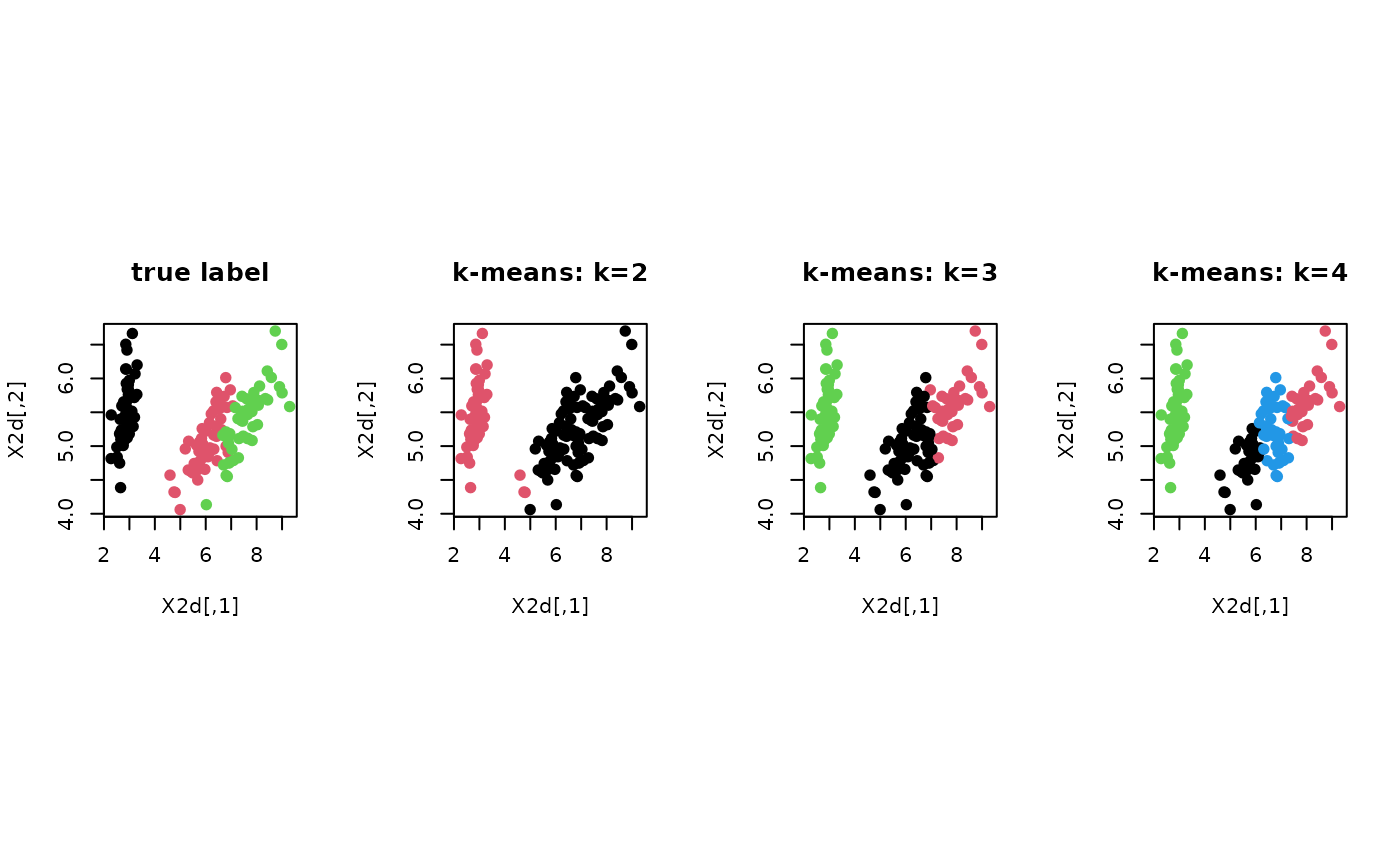\(K\)-means algorithm we provide is a wrapper to the Armadillo's k-means routine. Two types of initialization schemes are employed. Please see the parameters section for more details.
kmeans(data, k = 2, ...)
Arguments
| data | an \((n\times p)\) matrix of row-stacked observations. |
|---|---|
| k | the number of clusters (default: 2). |
| ... | extra parameters including
|
Value
a named list of S3 class T4cluster containing
- cluster
a length-\(n\) vector of class labels (from \(1:k\)).
- mean
a \((k\times p)\) matrix where each row is a class mean.
- wcss
within-cluster sum of squares (WCSS).
- algorithm
name of the algorithm.
References
Sanderson C, Curtin R (2016). “Armadillo: A Template-Based C++ Library for Linear Algebra.” The Journal of Open Source Software, 1(2), 26. ISSN 2475-9066.
Examples
# ------------------------------------------------------------- # clustering with 'iris' dataset # ------------------------------------------------------------- ## PREPARE data(iris) X = as.matrix(iris[,1:4]) lab = as.integer(as.factor(iris[,5])) ## EMBEDDING WITH PCA X2d = Rdimtools::do.pca(X, ndim=2)$Y ## CLUSTERING WITH DIFFERENT K VALUES cl2 = kmeans(X, k=2)$cluster cl3 = kmeans(X, k=3)$cluster cl4 = kmeans(X, k=4)$cluster ## VISUALIZATION opar <- par(no.readonly=TRUE) par(mfrow=c(1,4), pty="s") plot(X2d, col=lab, pch=19, main="true label") plot(X2d, col=cl2, pch=19, main="k-means: k=2") plot(X2d, col=cl3, pch=19, main="k-means: k=3") plot(X2d, col=cl4, pch=19, main="k-means: k=4")
